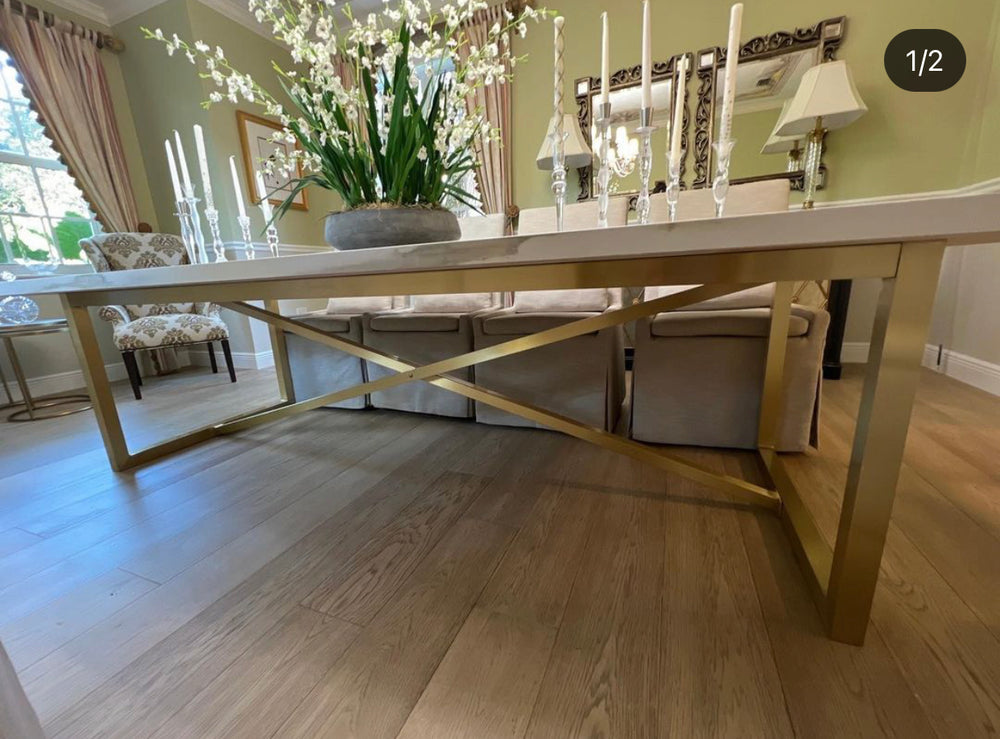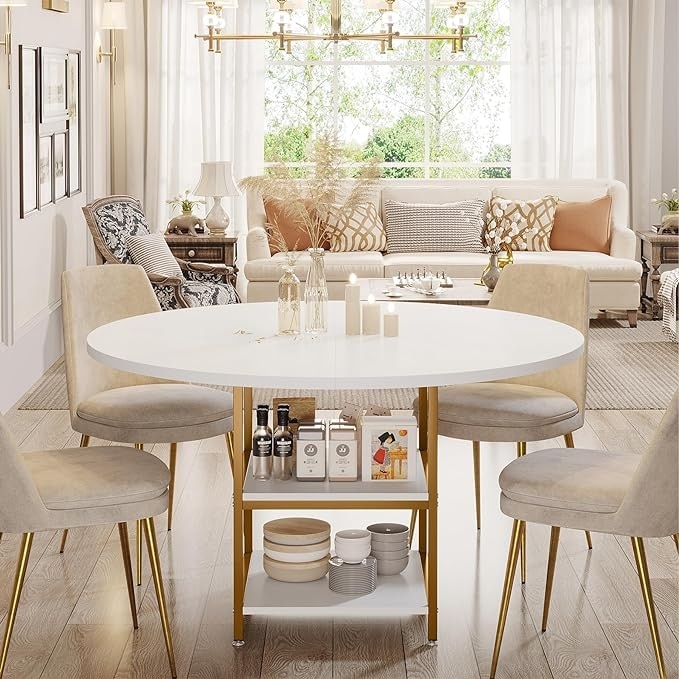The Top Trends in Dining Room Table Legs You Need to Know
The Top Trends in Dining Room Table Legs You Need to Know
Blog Article
From Typical to Modern: Locate the Perfect Dining-room Table Legs for Your Style
While traditional layouts such as cabriole and transformed legs stimulate a sense of ageless sophistication, modern styles like hairpin and geometric options provide an opportunity for striking visual passion. As you consider these aspects, the inquiry continues to be: just how can you perfectly integrate these diverse leg styles to produce an unified eating experience?
Comprehending Table Leg Styles
The range of dining-room table leg styles can considerably influence both the visual appeals and capability of the room. Each leg design contributes distinct visual elements and useful functions, providing to varied style choices and usage demands. Comprehending these styles is essential for choosing the best table that straightens with your total interior style vision.
As an example, tapered legs use a tidy, timeless look that can boost a space's style, while pedestal bases give stability and optimize legroom, making them excellent for smaller sized areas. Barrette legs, a hallmark of mid-century contemporary design, present a commercial panache, enabling a ventilated, open feeling. Similarly, trestle legs evoke rustic appeal, providing durable assistance and a feeling of timelessness.
In addition, the choice of products plays a considerable role. Wooden legs can bring heat and appearance, whereas metal choices often share a streamlined, modern ambiance. Inevitably, recognizing table leg styles is vital for producing a cohesive dining location that shows individual design while making sure usefulness and comfort. By attentively thinking about these elements, you can enhance both the visual and useful allure of your dining room.
Traditional Table Leg Options
When choosing dining area table legs, standard choices usually personify classic sophistication and craftsmanship. These layouts mirror an abundant heritage and a dedication to top quality, making them perfect for those that appreciate timeless visual appeals.
Among one of the most famous standard leg styles is the cabriole leg, defined by its elegant curved form. This design commonly includes ornamental makings and is most commonly discovered in Queen Anne and Chippendale furniture. An additional popular option is the transformed leg, which boasts a collection of smooth, rounded shapes that offer a timeless look while preserving stability.
In addition, the straight leg, while basic, provides a basic and tough structure that can mix effortlessly with a selection of tabletop designs. For those attracted to ornate outlining, claw-and-ball feet legs evoke a feeling of magnificence and can function as a spectacular prime focus in any kind of dining room.
Last but not least, pedestal bases, although not purely legs, offer an alternative conventional choice that allows for enough legroom and can be magnificently carved. Each of these traditional leg styles adds to the total atmosphere of a dining-room, weding feature with aesthetic appeal.

Modern Table Leg Designs
Modern table leg designs offer a varied array of styles that highlight innovative materials and tidy lines. These styles often prioritize capability while offering as striking centerpieces within a dining room. Minimalist looks prevail, with legs crafted from materials such as metal, glass, and engineered wood, which contribute to a airy and modern feeling.
One preferred style is the hairpin leg, defined by its slim, tapered framework that provides stability without overwhelming the table top (dining room table legs). This style is typically found in mid-century modern furniture and can easily match numerous table forms. One more trend is making use of geometric shapes, where legs might handle angular or asymmetrical kinds, adding visual passion and a touch of virtuosity

Blending Styles for One-of-a-kind Areas
Commonly, home owners seek to develop one-of-a-kind dining spaces that mirror their personal style by mixing various design components. This approach permits the incorporation of varied appearances, causing a harmonious yet unique atmosphere. For instance, combining a rustic wood table with streamlined, modern metal legs can develop an appealing comparison that raises the room's total charm.
In addition, incorporating vintage table legs with contemporary table tops can stimulate a sense of background while maintaining a modern-day sensibility. Such combinations not only showcase private taste but additionally encourage creative thinking, allowing house owners to curate a room that really feels both individual and inviting.
Shade plays an important duty in this blending procedure; choosing table legs that match or comparison with the existing color design can improve Visit Your URL visual interest. For instance, whitewashed legs can soften the daring of a dark table surface, creating a balanced aesthetic.
Tips for Picking the Right Legs
Choosing the right table legs is necessary for achieving both functionality and aesthetic appeal in your eating room. Begin by thinking about the total style of your space. Traditional settings gain from legs that feature detailed makings or here are the findings turned designs, while contemporary rooms might call for smooth, minimal styles.
Next, evaluate the height and security of the legs. dining room table legs. Conventional table vary between 28 to 30 inches in height, so guarantee the legs complement this dimension for convenience. Furthermore, durable materials, such as hardwood or steel, can enhance stability and longevity
Evaluate the leg shape also-- options consist of right, tapered, or stand layouts. Straight legs supply a classic look, while tapered legs can add a touch of sophistication. Pedestal bases provide enough legroom and are suitable for smaller areas.
Final Thought
In recap, choosing the perfect dining-room table legs calls for careful factor to consider of both modern and conventional designs. Conventional choices such as cabriole and turned legs offer classic elegance, while modern designs like hairpin and geometric shapes provide a contemporary touch. By balancing leg design, height, and product with the overall design, a cohesive and welcoming ambience can be accomplished. Ultimately, the chosen table legs need to mirror the preferred visual, improving the dining experience within the space.
The selection of dining space table leg styles can dramatically influence both the aesthetics and functionality of the area. Inevitably, comprehending table leg designs is vital for creating a natural eating location that shows personal design while guaranteeing practicality and convenience.One of the most famous conventional leg designs is the cabriole leg, defined by its stylish curved shape. Straight legs supply a traditional look, while conical legs can add a touch of style.In summary, picking the perfect dining space table legs needs cautious factor to consider of both conventional and contemporary designs.
Report this page